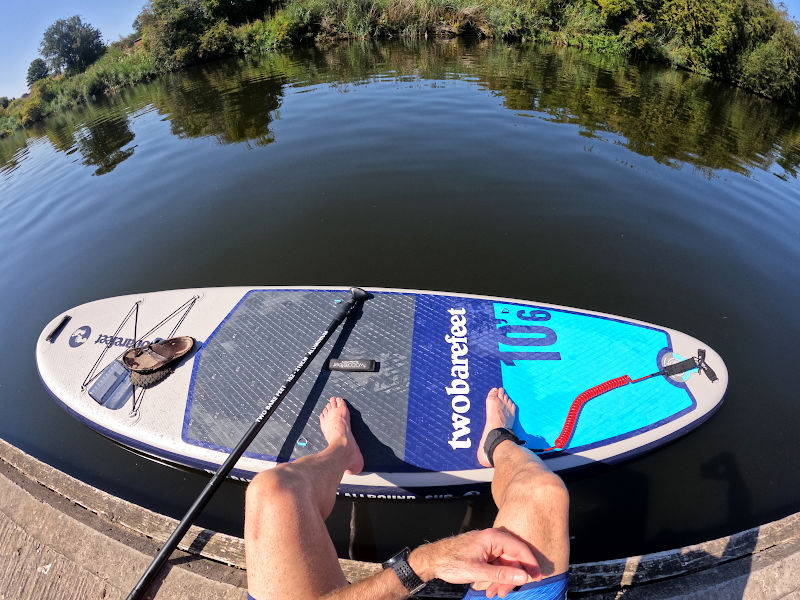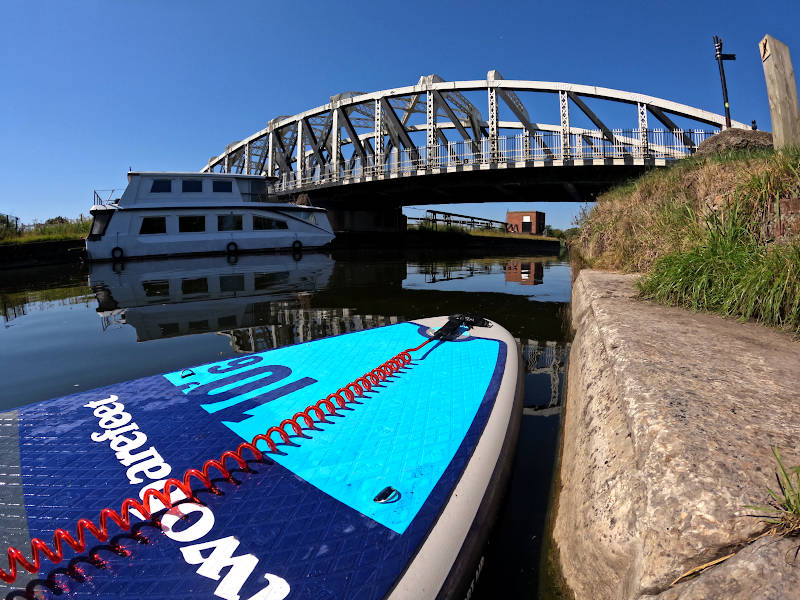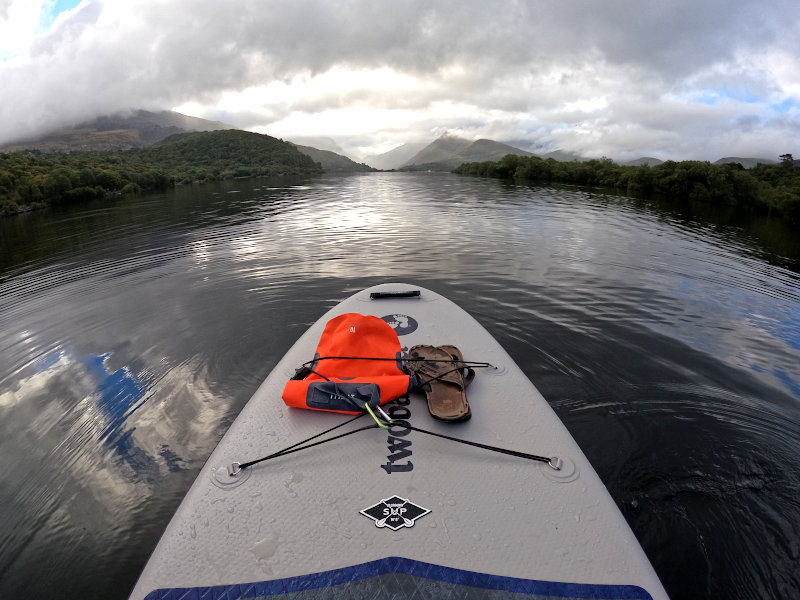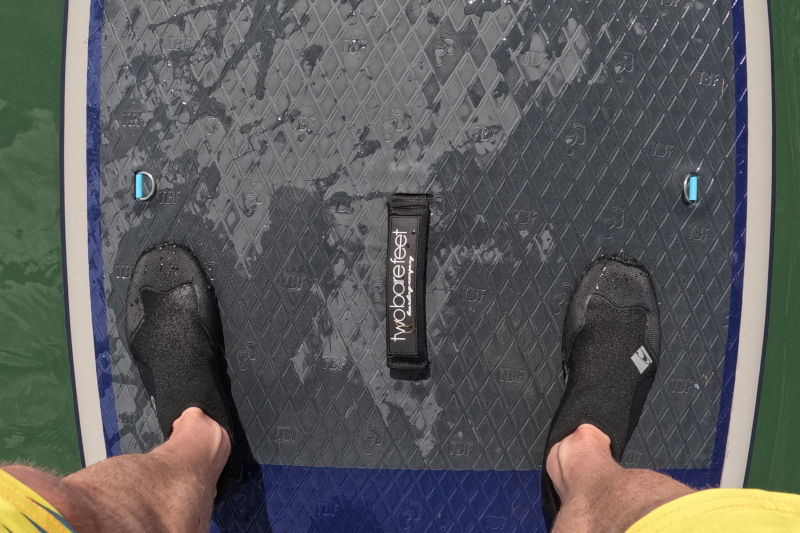As I dust off my SUP gear here in the UK for another season of paddling I thought I’d do a quick post covering the essential equipment you’ll need and optional accessories and clothing considerations – whether you are new to SUPing or looking to buy a paddle board related gift, I hope this post atleast gives you some guidance and potentially leads you towards that all important purchase!
Please note – as an Amazon Associate, I earn from qualifying purchases. It doesn’t cost you anything extra, but your purchases help support the site. Thanks!
Equipment
The fundamental gear you’ll need to go paddling – no surprises here!
Paddle Board
If you are reading this post as a prospective SUPer then your first port of call will be an actual paddle board! The main conundrum is whether to go inflatable (iSUP) or rigid. Factors to consider include:
- Budget – typically an iSUP will be cheaper than a rigid board, assuming your budget is the main consideration then an iSUP will be the way to go (to get you started anyhow..)
- Storage – you can’t fold up a rigid board, which means you’ll need an area sufficient in size to store it – get your tape measure out and ensure you have space if you are thinking of going rigid. That said an uninflated iSUP isn’t particularly small either!
- Transport – similar to the above with a rigid board you’ll need a roof rack, pickup or van to transport it – unless you are lucky enough to live by the water!
- Durability – A rigid board should in theory last a very long time, an iSUP is obviously susceptable to punctures and I guess overtime may degrade (seams etc)? Given the other factors an iSUP will likely suit most, and nothing lasts forever right ?!
- Size – No two paddle boards are the same (well you know what I mean!). Differents lenghts, widths and depths are designed to suit the various sup disciplines (all round, touring, yoga, surf etc) and indeed the weight and skills of the paddler(s). The point is do your research and take into consideration where you are likely paddle, if you intend to take your kid/dog/cat/partner on it (increasing the overall weight), your balance capabilties etc
There are iSUPs to suit all budgets and requirements, my advice is whichever brand you choose check out the warranty and ensure spares (most importantly fins) are available to purchase aftermarket. I own a Two Bare Feet Sport Air 10’6″ – and I’ve also paddled a Red Paddle Ride and O’Brien HPx – I can recommend them all!
Paddle
An adjustable 2 or 3 piece paddle generally made from Fibreglass, Aluminiun or Carbon – the latter being pricier but lighter (a consideration perhaps if you plan on touring or going for longer paddles).

Leash
A coiled or straight leash depending on where you are paddling – from a safety perspective a straight leash is recommended for flowing water i.e. rivers/ocean etc. The ankle strap can in theory also be strapped to your wrist, though in flowing water a quick release waist strap (with ankle strap attached) provides the safest option should you potentially need to detach from your board quickly and where you could struggle to reach your ankle (for various reasons).

PFD Buoyancy Aid
Safety is always my top priority and this includes wearing a SUP buoyancy aid – certainly in moving water and generally in still water (definately in cold/deep bodies of water), and always when I’m paddling alone. Make sure the thing fits you properly and is designed to provide enough buoyancy for your weight etc.
I personally wear a Yak Kurve which has a super handy expanding front pocket, perfect for stashing snacks and my GoPro!
Accessories
Optional extras and upgrades to enhance your SUPing experience.
SUP Bag / Strap
A carry bag for an iSUP is used both for storage and to carry the paddle board to the waters edge (prior to inflating), they are also useful for containing water once the board is deflated and back in your car/van.
A shoulder carry strap I guess is useful for carrying a rigid or inflated board over a longer distance, which can be hard work – especially so if windy!
Pump
For iSUPs as a minimum you’ll need a dual action hand pump, if not a 12v electric SUP pump – something like the Outdoor Master Shark. I can cope with using a hand pump to inflate one SUP, anymore and I’d be investing!
Deck (dry) Bag
A shove my valuables in a dry bag, stashed under my bungee cord storage at the nose of the board. For added security in moving water I’ll use a Carabiner to securely attach. I personally use a 5L ITIWIT drybag from Decathlon, loads of options online including the Earth Pak Dry Bag.
SUP Kayak Seat
Grab a Kayak SUP seat and double ended paddle (SUP paddle extensions/converters can be purchased) and you essentially have a sit on top kayak! Owning one will add an extra dimenstion to a day on the water, and may become your go to set-up in certain circumstances.
You’ll need D-rings on your board to clip the seat straps to. Most mainstream board manufacturers sell SUP seats.
First Aid Kit
A small, lightweight first aid kit is a no brainer for any outdoor activity – paddle boarding is no exception! I have a Lifesystems Pocket First Aid Kit, alternatively you could buy separate items and make one up yourself.
SUP Trolley
Handy if you need to transport inflated iSUPs or heavier rigid boards over a distance to the waters edges – something like this foldable cart trolley from Conwy Kayaks (who also sell iSUPs). Not something I’ve considered/needed thus far.
Deck Storage
If your SUP has D-rings at the nose you can attach some bungee cord to stash your dry bag and other stuff under. A deck cargo net arguably provides a little more security – if you are feeling flush something like a Red Paddle Cargo Net will do it.

Water Bottle
Paddling can be thirsty business (especially on a hot day) so remember to stay well hydrated. If you are on the look out for a new water bottle I like the Nalgene Triton Narrow Mouth Bottle – the narrow opening reduces water loss in the event you accidentely knock it over!
Waterproof phone case
I store my phone in a waterproof case so I can use it on the board worry free. Something like the Mpow Waterproof Phone Case.
Clothing
Clothing considerations to make your paddle that bit safer, more enjoyabe or perhaps bearable!
Deck shoes
An optional accessory which I personally managed without for a while, however walking into water with uneven and stony underfoot conditions can be a recipe for a cut foot or slip, indeed staying upright on a slimy deck in bare feet can present challenges (an issue I’ve had on my local canal) – hence I invested to mitigate the possibility of a unexpected dip!

I have a pair of Neoprene reef boots – specifically some O’Neill Reactor Reef Boots (other brands and models are available :D)
Wet suit
A must when the water temperature could pose a risk to health (or indeed just be freaking uncomfortably cold), I always go with an assumption I may fall into the water and dress accordingly. Cold water shock is no joke so please don’t take any undue risks.
Changing Robe
Changing robes seem to be all the rage nowadays, and indeed for some have become a wet weather wardrope staple in urban settings. The premium Dryrobe appears to be leading the pack, with an increasing number of brands now entering the market.
For now I intend to stick to my beach towel and if I’m caught out in inclement weather I’ll embrace the shiver – Wim Hof style. That said if my wife is looking for a gift that may change…
Conclusion
You can start off with minimal gear really (or none if you hire), though please don’t comprimise on safety. Most importantly SUPing is supposed to be fun, so only spend what you can afford and aim to build up your gear over time – as you paddle more you’ll naturally figure out what accessories and clothing will best work for you.
Please note – as an Amazon Associate, I earn from qualifying purchases. It doesn’t cost you anything extra, but your purchases help support the site. Thanks!
Remember – we cannot highlight all potential hazards when out in the great outdoors. Safety is ultimately down to you. Educate yourself in safety, weather reports, navigation and equipment specific to the activity you intend to undertake and conditions/terrain you may encounter! Check out adventuresmart.uk for general outdoor safety considerations – and activity specific guidance for hill walking, paddle boarding, mountain biking and open water swimming.
